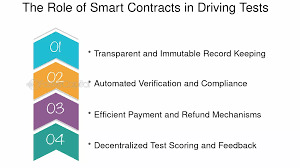#GraduatedLicensing
Explore tagged Tumblr posts
Text
How Graduated Licensing Helps Improve Road Safety in Canada
Canada has a Graduated Licensing System (GLS) that helps new drivers develop the skills they need for safe driving over time. This system, designed to reduce the risks associated with novice drivers, is a key factor in enhancing road safety across the country. Here’s how graduated licensing works and how it contributes to safer roads.

What is Graduated Licensing?
Graduated licensing is a two or three-stage process that gradually allows new drivers to gain more driving privileges as they accumulate experience and demonstrate responsibility behind the wheel. The stages are as follows:
G1/G2 or Class 7 (Beginner's Permit):
The first stage involves a written knowledge test and a vision test.
Drivers must have a fully licensed driver with at least four years of experience in the passenger seat.
No alcohol (zero tolerance) is allowed in the bloodstream.
G2 or Class 5 (Intermediate Stage):
After holding a G1 or Class 7 for a minimum of 8–12 months, drivers can take a road test.
Drivers gain more freedom (can drive alone) but still face night driving and highway restrictions.
Zero blood alcohol content (BAC) is enforced, and the number of demerit points before suspension is lower.
Full License (Class 5 or G):
Once drivers have held their G2 or Class 5 for at least 12–24 months, they can take a final road test.
After passing the test, they can drive unrestricted, including night driving and on highways.
Why Graduated Licensing Improves Road Safety
1. Reducing Risk for New Drivers
Novice drivers are the most likely to be involved in accidents, especially young drivers under 25.
GLS reduces this risk by limiting their exposure to high-risk situations (like highway driving) and gradually increasing their driving privileges as they gain more experience.
2. Building Skills Gradually
The G1 stage is designed for drivers to focus on developing basic driving skills in low-risk environments (like local streets).
In the G2 or Class 5 stage, drivers gain exposure to more challenging conditions like night driving and higher-speed roads, giving them time to adapt and refine their skills before fully independent driving.
3. Limits Distractions and Risky Behaviors
The restrictions in the G1/G2 stage help minimize distractions:
No driving with passengers in the G1 stage.
Nighttime driving restrictions for G2 drivers help reduce risk by limiting driving during times when fatigue or impairment is more common.
4. Zero Tolerance for Alcohol
Zero tolerance for alcohol is enforced for beginner drivers (G1, G2, and even some intermediate stages).
This significantly reduces the risk of alcohol-related accidents, especially among young and inexperienced drivers who might be more likely to engage in risky behaviors like drinking and driving.
5. Increased Focus on Safe Driving Habits
The gradual process encourages new drivers to develop safe driving habits, such as:
Adapting to changing weather conditions (like snow or rain).
Proper lane changes and safe following distances.
Avoiding distractions such as texting while driving.
6. Lower Collision Rates
Studies show that the Graduated Licensing System significantly reduces collision rates among new drivers.
In Ontario, the introduction of GLS led to a 30% reduction in collisions among young drivers.
A similar reduction in accidents has been observed in other provinces with a graduated system.
7. Better Preparation for Real-Life Driving Conditions
Graduated licensing allows new drivers to practice in real-world conditions before taking on the responsibility of full, unrestricted driving. It emphasizes building up confidence and expertise for high-risk driving situations such as:
Heavy traffic.
Highway driving.
Adverse weather conditions. Guide your teen's journey with help from licenseprep.ca.
#GraduatedLicensing#SafeDriving#CanadaRoadSafety#NewDrivers#DriverEducation#RoadSafetyCanada#DrivingTips#SafeRoads
6 notes
·
View notes
Text
Graduated Licensing Expansion – What New Drivers Must Complete in 2025
Introduction: In 2025, Canada has made significant updates to its Graduated Licensing System (GLS) to better equip new drivers for the realities of today’s roads. The updates reflect a national focus on traffic safety, hands-on experience, and digital tools to build more confident, responsible drivers from the start. Whether you’re starting your G1/M1 journey or transitioning to G2/M2, the process is now more structured and data-driven than ever before.

Key Points:
Longer Learner Phases: Provinces such as Ontario and Alberta have extended the mandatory learner periods, requiring new G1 and M1 license holders to wait longer before advancing to the next stage. This extension gives learners more time to build foundational skills under supervision, ensuring they're truly ready for independent driving.
New Practice Hours Requirement: All learner drivers must now complete at least 50 hours of supervised driving, which must include a combination of daytime, night-time, and highway practice. These hours must be digitally logged using government-approved apps. Many of these apps sync directly with resources on licenseprep.ca, allowing learners to track and validate their practice efficiently.
Mandatory Online Education Modules: Before booking their G2 or M2 road test, learners must now complete a digital traffic safety module. This module includes interactive videos, quizzes, and updated laws related to distracted driving, pedestrian awareness, and eco-driving. It ensures all new drivers have the same foundational knowledge, regardless of their province.
Real-Time Assessment Integration: Examiners now use tablets during road tests to record driving errors, patterns, and scoring in real-time. These digital assessments are uploaded directly to the licensing system and offer detailed performance breakdowns to help learners understand what areas to improve — a leap forward in driving transparency and feedback.
Free Test Simulators Available at licenseprep.ca: With the new system in place, passing your road test can feel more daunting. To support learners, licenseprep.ca now provides interactive mock driving tests that match the 2025 road test format. These simulators replicate real-world scenarios, giving users the chance to practice under pressure before the real exam.
3 notes
·
View notes
Text
How Graduated Licensing Works in Canada (GDL Explained)

Introduction
Graduated licensing is used in almost every Canadian province to help new drivers build experience gradually. It's designed to reduce collisions and improve road safety. Here's how it works.
GDL Breakdown
1. Learner’s Permit (G1/Class 7) This is the first step where you learn the rules of the road. You must drive under supervision and avoid highways.
2. Intermediate License (G2/Class 5-GDL) After gaining experience, you can drive alone but still have restrictions, like zero alcohol tolerance or curfews.
3. Full License (G/Class 5) The final stage allows unrestricted driving after passing advanced road tests.
4. Timeframes Matter Progression usually takes 2–3 years, depending on the province and whether you attend driving school.
licenseprep.ca outlines the GDL process for each province and gives you tools to prepare for each test along the way.
licenseprep.ca provides detailed information about GDL system.
4 notes
·
View notes
Text
What Makes a Canadian Driving License Valid Across Provinces
In Canada, once you have a driver’s license from any province or territory, it is valid across the entire country. This nationwide recognition of your driving credentials is a result of several factors that ensure smooth mobility for drivers, regardless of where they are in the country.

1. Standardized Licensing Regulations
Although each province has its own licensing authority, there is a high level of standardization when it comes to the basic requirements for obtaining a Canadian driver’s license. These include passing a written knowledge test, a practical road test, and meeting vision and health requirements. This consistency ensures that drivers across all provinces meet the same essential criteria, making licenses transferable between regions.
2. Reciprocal Recognition of Licenses
Canadian provinces have a system of reciprocal recognition that ensures your driving privileges are valid from one province to another. This means that if you hold a valid driver’s license in Ontario, for example, it will be automatically accepted in British Columbia or Quebec without needing to apply for a new license.
3. Graduated Licensing Systems
Some provinces, like Ontario, have a graduated licensing system where new drivers start with a G1 or Class 7 license and gradually progress to a full license. Once you’ve obtained a full, unrestricted license, it is valid across Canada, no matter which province you originally got it in.
4. License Exchange
If you’re moving to a new province, you can exchange your old license for a new one in your new province without needing to take a road test (unless it’s an international license).
For anyone looking to understand how to get or exchange a Canadian license, licenseprep.ca offers tools and resources to help you navigate the process.
#CanadianDrivingLicense#InterProvincialLicense#DrivingInCanada#LicensePrepCanada#G1Test#GraduatedLicensing#LicenseExchange#DrivingAcrossProvinces#licenseprepca
2 notes
·
View notes
Text
Understanding Canada’s New Distracted Driving Laws and Their Impact on New Drivers

Distracted driving is one of the leading causes of road accidents in Canada, and the government is taking it more seriously than ever. With new laws and tougher penalties in place, new drivers need to be especially aware of what counts as distracted driving—and how it can affect their ability to get or keep a license.
Here’s what you need to know about Canada’s updated distracted driving laws and how to stay safe (and legal) on the road.
What Is Distracted Driving?
Distracted driving includes any activity that diverts attention from driving, such as:
Using a mobile phone (even at a red light)
Eating or drinking
Adjusting your GPS or radio
Talking to passengers
Looking away from the road for too long
But the most serious—and most targeted—form is texting or using handheld electronic devices while driving.
What Do the New Laws Say?
Laws vary slightly by province, but here are some updated common elements across most of Canada:
Use of handheld devices is prohibited at all times while driving, even when stopped at a light.
First-time offenses can result in fines up to $1,000, 3–5 demerit points, and in some provinces, license suspension.
G1 and G2 (learner and novice) drivers face stricter penalties, including longer suspensions and delayed graduation to the next license level.
How This Impacts New Drivers
For new drivers, even one distracted driving ticket can have serious consequences:
You may lose your G1 or G2 license temporarily.
Your progress through the graduated licensing system can be delayed.
Your car insurance rates may increase.
You could be required to restart the licensing process in some cases.
Learn the Rules with licenseprep.ca
Avoid surprises on your test and on the road. Study the rules around distracted driving and more with easy-to-follow guides and practice tests at licenseprep.ca.
Final Advice
Distracted driving is not just about texting—it’s anything that takes your focus off the road. For new drivers especially, staying fully alert and following the rules is essential for safety and license security. As the laws evolve, so should your driving habits.
#DistractedDrivingCanada#NewDriverTips#DrivingLawsCanada#GraduatedLicensing#SafeDriving#LicensePrep#CanadianRoadTest
0 notes
Text
The History of Driving Tests: How They've Evolved Over Time

The driving test has become a rite of passage for millions worldwide, symbolizing both freedom and responsibility. But this was not always the case. The history of driving tests reveals how our views on road safety, training, and licensing have changed dramatically over the past century.
1. Early Days: Driving Without Testing When cars first appeared in the When cars first appeared in the late 1800s and early 1900s, there were no formal tests or licenses required. Driving was a novelty, and most roads were shared with horse-drawn carriages. As the number of cars grew—and so did accidents—governments realized regulation was needed.
2. The First Official Driving Test The world The world's first mandatory driving test was introduced in France in 1893. Germany followed in 1903, requiring drivers to demonstrate mechanical knowledge and basic driving skills. In North America, Massachusetts and Missouri were the first US states to require licenses (in 1903), but without a driving test.
3. Testing Becomes Widespread It wasn't until the 1930s that driving tests became standardized in many places. In the UK, the first compulsory driving test was introduced in 1935. Canada began implementing mandatory tests around the same time, as traffic volumes increased and road safety became a national concern.
4. How the Test Evolved Over Time Early tests focused on basic skills like steering, starting, and stopping. Over time, they evolved to include parallel parking, merging, understanding signage, and eventually hazard perception. Written theory tests were introduced to ensure drivers understood traffic laws—not just vehicle operation.
5. Introduction of Graduated Licensing Systems By the late 20th century, many regions introduced a graduated licensing system. This includes stages like learner's permits, intermediate licenses, and full privileges. These changes aimed to reduce crashes among new drivers by introducing experience-based progression.
6. The Role of Technology in Modern Testing Today's driving tests often include computerized theory exams, simulators, and dashcams to record on-road performance. Some jurisdictions even allow booking and tracking progress online. These technologies help standardize testing and reduce human bias.
7. A Continued Focus on Safety and Skill While the format and requirements of driving tests continue to evolve, their purpose remains the same: ensuring that new drivers possess the knowledge, judgment, and physical skills to navigate modern roadways safely and responsibly.
Understanding the history behind the driving test helps us appreciate how far we've come—and why it's so important to keep improving. For resources and support in preparing for your own test, visit licenseprep.ca .
Tags: #DrivingTestHistory #GraduatedLicensing #RoadSafety #DriverEducation #LicensePrep #licenseprep
3 notes
·
View notes
Text
Driving Rules for Teen Drivers in Canada
Introduction: For young drivers, Canada’s driving laws are designed to ensure safety as they gain experience. Teen drivers face restrictions based on their graduated licensing status.

Key Points:
Graduated Licensing System (GLS): Most provinces use a GLS, which involves multiple stages: the G1 (learner’s permit), G2 (probationary license), and finally, the full G license. Each stage has its own set of rules to help drivers gain skills gradually.
Zero Alcohol Tolerance: Teen drivers must adhere to a zero blood alcohol content (BAC) rule, which applies across all provinces. Driving under the influence can lead to severe penalties, including suspension and fines.
Passenger Restrictions: In some provinces, there are limits to how many young passengers can ride with a teen driver. This is particularly common during the G1 and G2 stages, aiming to minimize distractions.
Late Night Driving: Teens may be restricted from driving during certain hours (e.g., midnight to 5 a.m.), unless accompanied by a fully licensed driver. This rule is meant to minimize the risks associated with night driving.
Use licenseprep.ca for Test Preparation: To help pass the knowledge test and road test stages, teens can rely on licenseprep.ca. The platform offers practice quizzes, sample test questions, and other resources to boost their chances of success.
2 notes
·
View notes
Text
Understanding Class G1 Restrictions in Ontario
Introduction: If you're a new driver in Ontario, the G1 license is your first step in Ontario's Graduated Licensing System (GLS). While it’s an exciting milestone, there are specific rules you must follow to ensure safety and compliance.

Key Points:
Accompanied Driving: As a G1 driver, you cannot drive alone. You must always be accompanied by a fully licensed driver who has at least 4 years of experience.
Restricted Hours: You are not allowed to drive between midnight and 5 a.m. This restriction is in place to reduce the risks associated with night driving.
Zero Blood Alcohol Content (BAC): The G1 license comes with a zero-tolerance alcohol policy. You cannot have any alcohol in your system while driving.
Highway Restrictions: G1 drivers are not permitted to drive on high-speed highways like the 400-series unless they are accompanied by an instructor.
Prepare for Next Stages: Using platforms like licenseprep.ca can be helpful as you prepare for the G2 test. Regularly review road signs, traffic laws, and practice knowledge tests to move forward in the GLS system.
2 notes
·
View notes
Text
What to Expect from Canada’s Driving Test Reforms in 2025
Canada is implementing significant reforms to its driving test and licensing systems in 2025, aiming to enhance road safety, streamline processes, and integrate modern technology. Here's an overview of the key changes:

Stricter Distracted Driving Laws
Starting July 1, 2025, the definition of distracted driving will expand beyond mobile phone use to include activities like adjusting GPS settings, eating or drinking while holding food, and interacting with smart devices. Penalties are increasing, with first-time offenders facing fines of at least $750 and four demerit points, while repeat violations could lead to fines over $2,000 and license suspensions up to 30 days .
A uniform federal rule will ban all handheld electronic devices while driving. Only hands-free, voice-activated, or properly mounted devices will be permitted. Additionally, all new vehicles sold in Canada must include factory-installed Bluetooth or similar hands-free systems
British Columbia is proposing to eliminate the second road test requirement for drivers progressing from a Novice (Class 7) to a full Class 5 license. Instead, drivers will undergo a 12-month restriction period during which they must demonstrate safe driving behavior to progress. These changes aim to reduce wait times and improve accessibility, particularly for Indigenous and rural communities
A new Motorcyclist Licensing Program (MLP) will be introduced, requiring all new motorcycle riders to complete a structured program with a longer learning and restriction period. This initiative is designed to build safe riding habits and reduce motorcycle-related fatalities
Eco-Driving Education for Incentives
To qualify for federal and provincial zero-emission vehicle rebates, drivers will need to complete a government-approved eco-driving course. These courses teach techniques like smooth acceleration and efficient route planning, promoting greener driving habits .
For more information and resources to prepare for these changes, visit licenseprep.ca. Stay informed and ready for Canada's evolving driving landscape.
#CanadaDrivingReforms2025#DigitalLicensing#LicensePrep#EcoDriving#ADAS#GraduatedLicensing#MotorcycleSafety#DistractedDriving
1 note
·
View note
Text
Driving License Requirements for Teenagers in Canada – What You Need to Know
Getting a driving license is a huge milestone for Canadian teenagers. But the journey isn’t just about getting behind the wheel—it comes with legal requirements, waiting periods, and responsibilities.

General requirements for teens:
Minimum age: Usually 16 (varies slightly by province)
Parental consent: Often required for minors
Graduated Licensing System (GLS): Teens must progress through stages (e.g., G1 → G2 → G in Ontario)
Why it matters: The GLS helps teens gradually develop safe driving skills. Restrictions often include:
No driving after midnight
No alcohol (0% BAC)
Limited number of young passengers
Start studying the handbook early. Enroll in a certified driver education program—it can shorten waiting periods. Practice with a responsible adult in calm traffic areas first.
2 notes
·
View notes
Text
The Graduated Licensing System in Canada Explained
Introduction: Canada's licensing system is built to gradually introduce drivers to the road with increasing responsibility. Understanding how it works can help you plan your journey from G1 to full license.

Content: ✅ G1 – Learner's Permit
Must drive with a G-licensed supervisor
No highway or night driving
Hold for at least 8-12 months
✅ G2 – Intermediate License
Can drive alone
Some restrictions for new/young drivers
Hold for at least 12 months
✅ G – Full License
No major restrictions
Must pass a highway-focused road test
Interactive checking drills on http://licenseprep.ca
✅ Why This System Works
Reduces accidents in new drivers
Encourages learning over time
Builds confidence step by step
Trending Tags: #GraduatedLicensing #CanadaDriveSafe #FromG1toG #LicenseJourney #licenseprep
3 notes
·
View notes